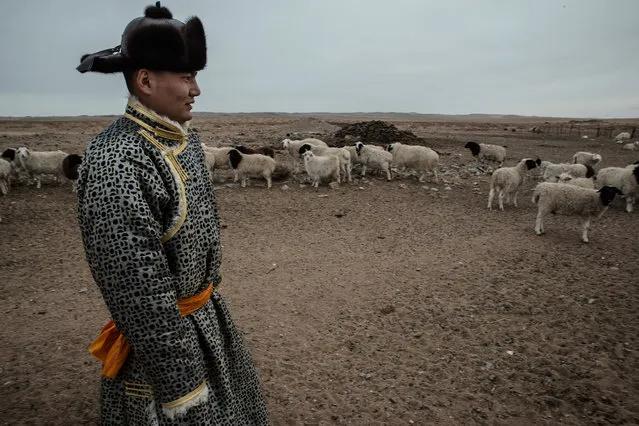
Chingele, a herder, wears a traditional Mongol costume to greet a neighbor for the New Year. Chingele was among a group of herders who went to Beijing to protest eviction from grazing lands to make room for an army training camp. (Photo by Gilles Sabrie/The Washington Post)
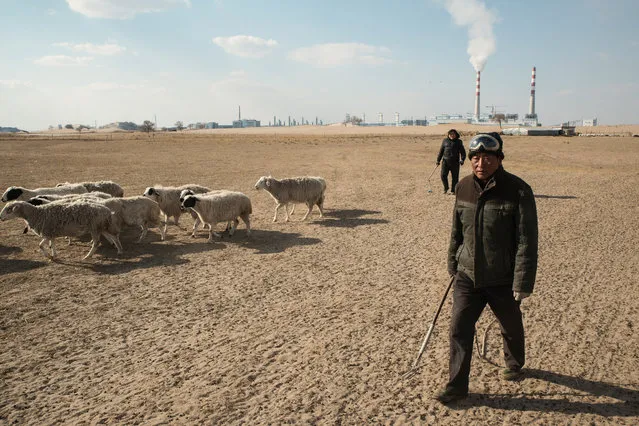
Mongolian herders tend their sheep near the Datang coal-to-gas plant. The herders have protested against the air and soil pollution caused by the plant. As China develops mineral resources, an ancient way of life is threatened. (Photo by Gilles Sabrie/The Washington Post)
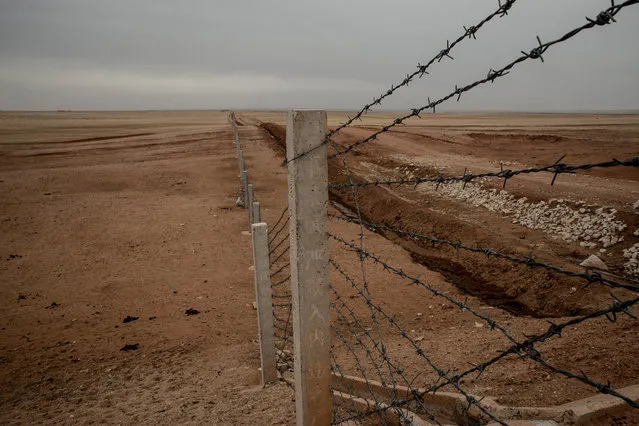
A barbed wire fence mark the limits of the Zurihe military training camp. Local herders have been expropriated without proper compensation for the creation of the base. (Photo by Gilles Sabrie/The Washington Post)
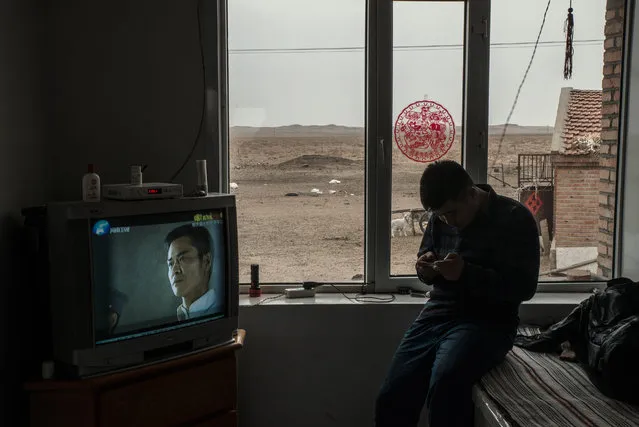
A herder checking his phone at home near an army training camp. The eviction of herders from their grassland for the extension the training base has led to protests. (Photo by Gilles Sabrie/The Washington Post)
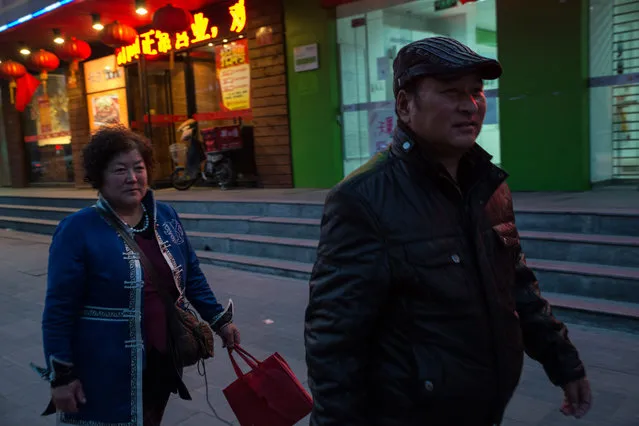
Sarengaowa, left, and Aodengfu, Mongols from Urad Banner, walk in Beijing, where they came with fellow herders to petition the government about abuses by mineral interests. Sarengaowa was detained for 15 days for participating in a similar protest in 2013. (Photo by Gilles Sabrie/The Washington Post)
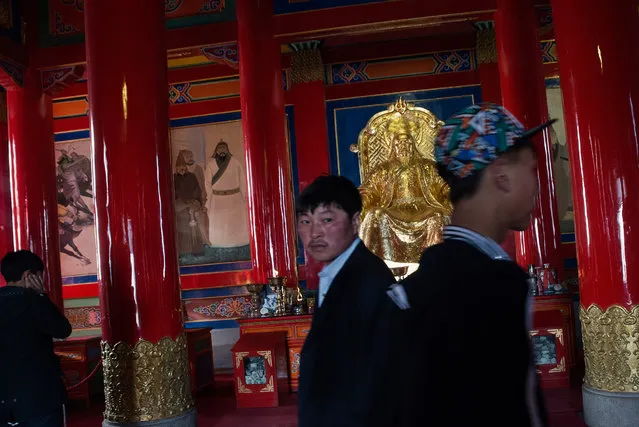
Visitors at a temple dedicated to Genghis Khan in Ulan Hot. (Photo by Gilles Sabrie/The Washington Post)
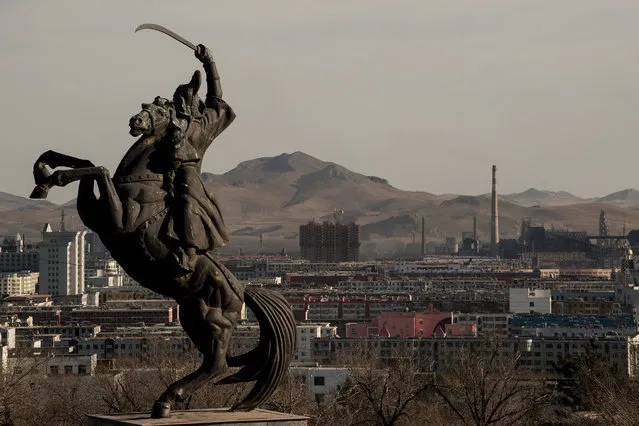
A statue of Genghis Khan in Ulan Hot. Genghis created history's largest contiguous land empire. (Photo by Gilles Sabrie/The Washington Post)
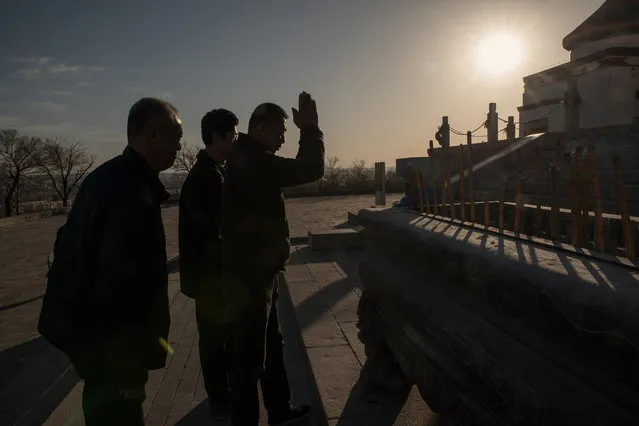
Visitors to a temple dedicated to Genghis Khan burn incense sticks as an offering to the Mongol hero. (Photo by Gilles Sabrie/The Washington Post)
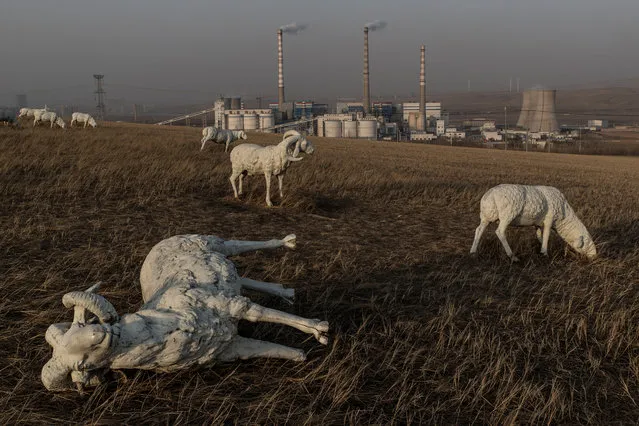
Statues of sheep in a park overlooking a coal fuelled power plant in Holingol. Herders have been forcefully removed from the grassland around Holingol due to severe pollution affecting the health of their livestock. (Photo by Gilles Sabrie/The Washington Post)
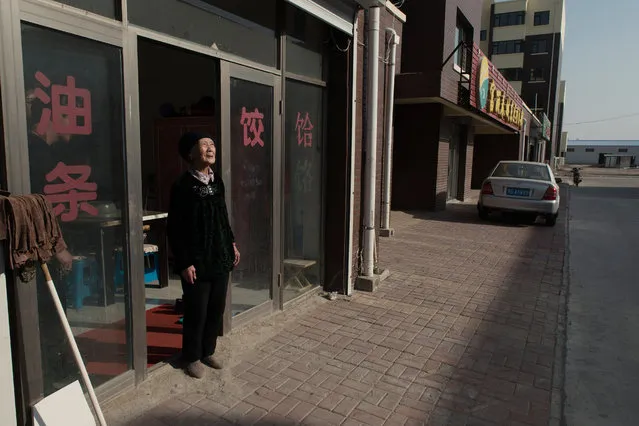
Dushaocai 75, standing at the doorstep of her appartment where she was forced to move to after her grassland got polluted by an aluminium plant. Her resettlement to this urban area, separated her from her sons. She misses the grassland and has fond memories of waking up before sunrise and cooking milk tea for her sons. The memory of her life in the grassland brings tears to her eyes. (Photo by Gilles Sabrie/The Washington Post)
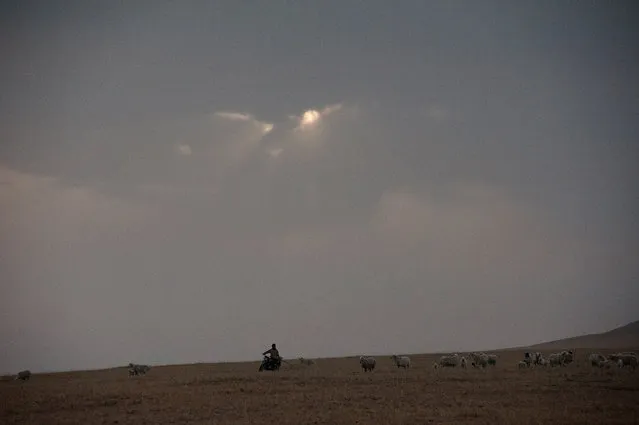
A herder on a motorbike looking after his sheep nearby a large coal mine. Mining development in the region, forcing the displacement of herders, has lead to large scale protests. (Photo by Gilles Sabrie/The Washington Post)
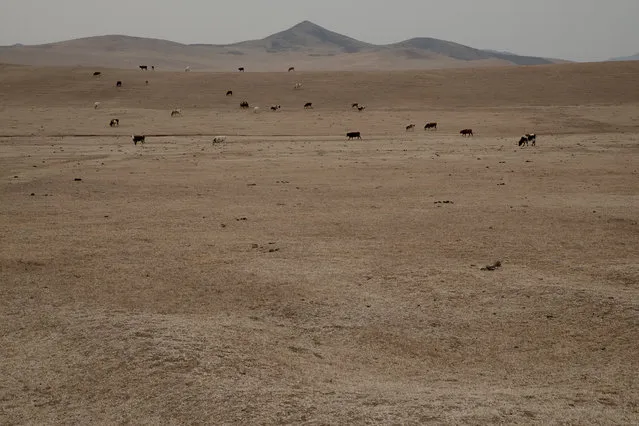
Cows in the grassland in the region of Holingol. (Photo by Gilles Sabrie/The Washington Post)
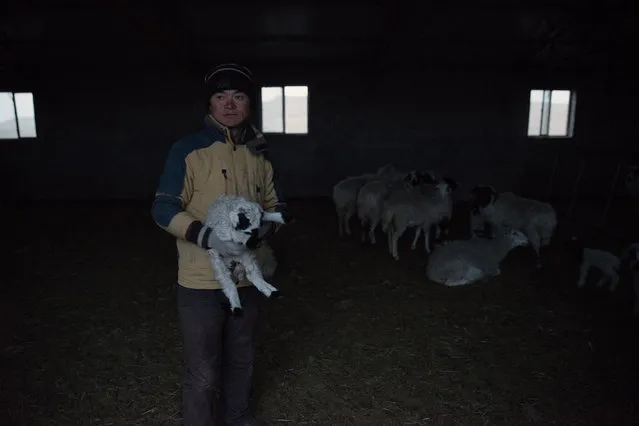
Eredun, A 39 years old herder bringing his sheep back to the the shed at dusk, in the grassland of West Ujimuqin. Eerdun lost 200 Mu grassland, worth 10,000 RMB (1.6126 USD), over coal mining. He left the land at where he grazed livestocks for over 30 years with 2,000 RMB (322.53 USD) compensation and a forklift of coal. Mining development in the region, forcing the displacement of herders, has lead to large scale protests. (Photo by Gilles Sabrie/The Washington Post)
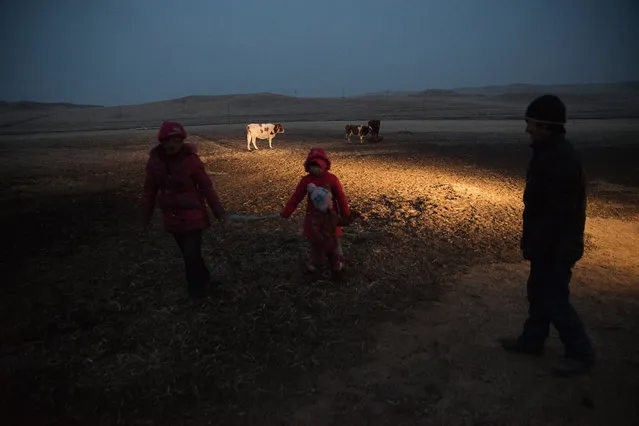
A family of herders at dusk, in the grassland of West Ujimuqin. The family has been forced to move out of their grassland due to a nearby coal mine. They have received a paltry compensation for the loss of their land. Mining development in the region, forcing the displacement of herders, as well as pollution, has lead to large scale protests. (Photo by Gilles Sabrie/The Washington Post)
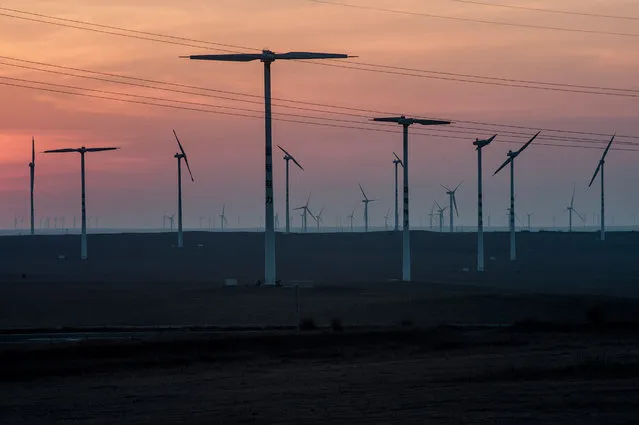
A wind farm near Xilingol. (Photo by Gilles Sabrie/The Washington Post)
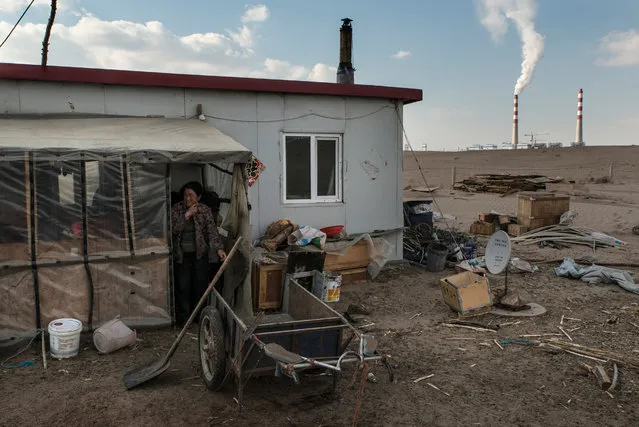
The home of a herder in front near the Datang plant. Nomadic pastoralists have lived on the grasslands of Inner Mongolia for thousands of years, but many are being pushed from their homes by mining and mineral industries. (Photo by Gilles Sabrie/The Washington Post)
10 Apr 2015 07:18:00,
post received
0 comments
